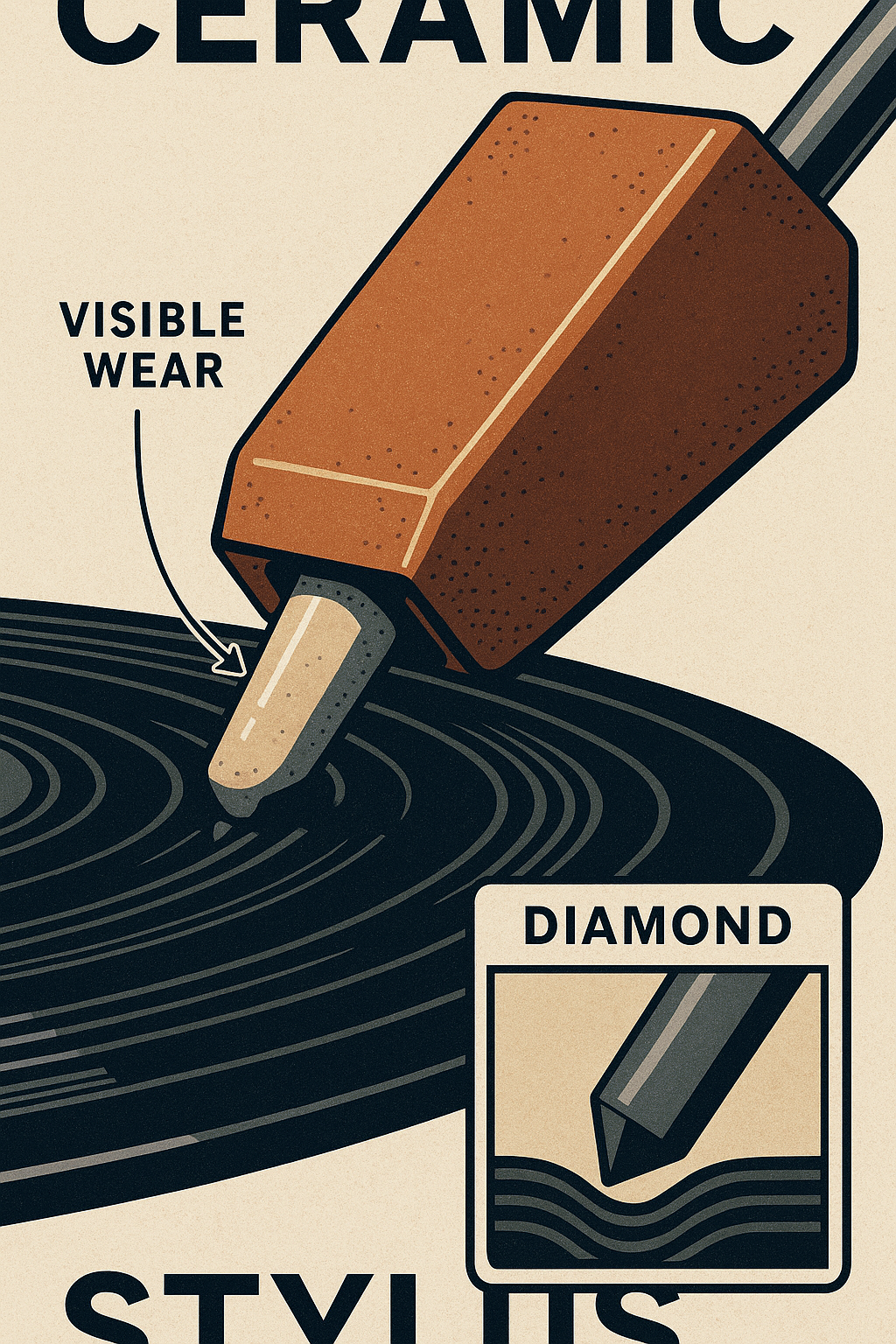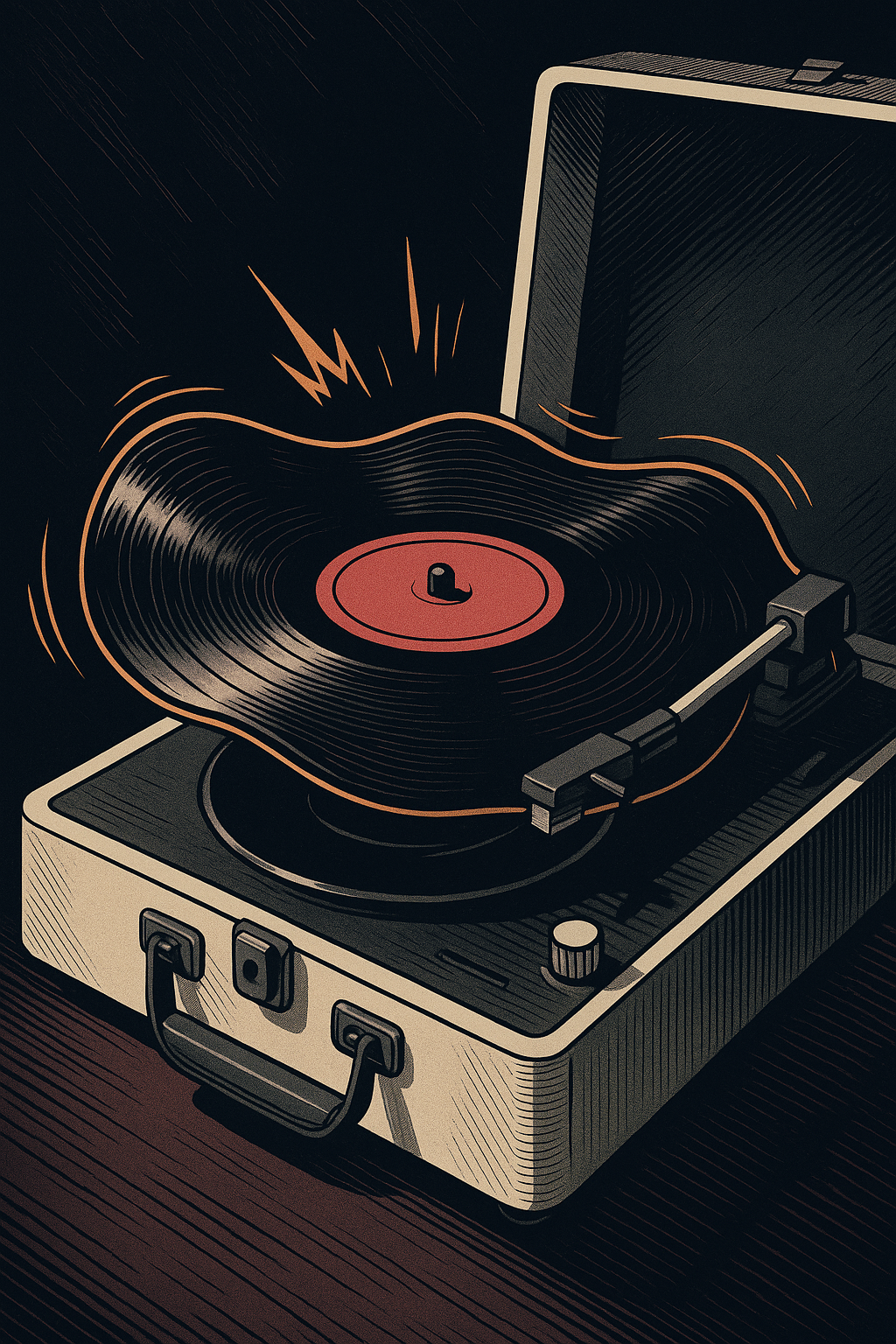Embarking on the vinyl journey is an exciting prospect. The ritual, the sound, the tangible connection to music – it's a deeply rewarding experience. However, like any craft or passionate pursuit, there's a learning curve. Newcomers, understandably, can make a few common missteps that might hinder their enjoyment, or worse, potentially damage their records or equipment.
But fear not! These pitfalls are easily avoidable with a bit of knowledge and mindful practice. This isn't about scaring you off; it's about empowering you to sidestep the common blunders and get straight to the good stuff: glorious analog sound.
1. Setup Stumbles: The Unholy Trinity of Tracking Errors
Getting your turntable's basic setup right is non-negotiable. Ignoring these can lead to poor sound, excessive record wear, and stylus damage.
-
Mistake: Incorrect Vertical Tracking Force (VTF) – too light or too heavy.
-
Why it's bad: Too light, and the stylus mistracks, causing distortion and bouncing in the groove (damaging both record and stylus). Too heavy, and you get premature wear on your stylus and records, and a dull, lifeless sound.
-
Avoidance: Invest in a stylus force gauge (digital ones are affordable and easy to use). Always set the VTF according to your cartridge manufacturer's recommendation. Our "Setting Vertical Tracking Force (VTF): Your First Step to Glorious Vinyl Sound" guide walks you through this.
-
-
Mistake: Ignoring or Misunderstanding Antiskate.
-
Why it's bad: Skating force naturally pulls the tonearm towards the center of the record. Without proper antiskate compensation, the stylus presses harder on the inner groove wall, leading to uneven wear, channel imbalance, and distortion.
-
Avoidance: Set your antiskate, usually to a value similar to your VTF as a starting point. For a deeper dive, refer to our "Understanding and Setting Antiskate on Your Turntable: A Deeper Groove" article.
-
-
Mistake: Not Leveling the Turntable.
-
Why it's bad: An unlevel turntable can cause the tonearm to favor one side, affecting tracking, antiskate effectiveness, and potentially causing the stylus to jump grooves.
-
Avoidance: Use a small bubble level (or a level app on your phone in a pinch, though a dedicated level is better) on the platter to ensure your turntable is perfectly flat. Adjust the turntable feet if they are adjustable, or shim if necessary.
-
2. Bad Vibes: Poor Turntable Placement
Your turntable is a sensitive instrument designed to pick up microscopic vibrations in the record groove. It will also happily pick up unwanted external vibrations.
-
Mistake: Placing the turntable too close to speakers or on an unstable surface.
-
Why it's bad: Speakers produce vibrations. If your turntable is too close, these vibrations can travel through the surface (or even the air) and be picked up by the stylus, causing feedback (a howling or booming sound), muddy bass, and general sonic murkiness. Unstable surfaces (wobbly tables, bouncy floors) cause similar issues.
-
Avoidance: Place your turntable on a solid, stable, and level surface, as far away from your speakers as practical. Consider dedicated isolation platforms or feet if you have particularly bouncy floors or a powerful sound system.
-
3. Hygiene Horrors: Dirty Records & Gunked-Up Styli
Vinyl is a physical medium. Dust, grime, and fingerprints are its enemies.
-
Mistake: Playing dirty records or never cleaning the stylus.
-
Why it's bad: Dust and dirt on records act like sandpaper, grinding away at your stylus and the record groove. This causes surface noise (clicks, pops, crackle) and premature wear. A dirty stylus will mis-track, sound distorted, and transfer gunk to your records.
-
Avoidance:
-
Records: Use a carbon fiber record brush before every play. For deeper cleaning, invest in a record cleaning solution and microfiber cloths, or eventually, a record cleaning machine.
-
Stylus: Use a dedicated stylus brush (gently brush from back to front only) regularly. Some people use a small piece of Magic Eraser (original white version only, used very carefully by lowering the stylus onto it once or twice – research this technique thoroughly if you attempt it).
-
-
4. All Thumbs: Improper Record Handling
Your fingerprints contain oils and acids that are not friendly to vinyl.
-
Mistake: Touching the playing surfaces of the record.
-
Why it's bad: Oils and dirt from your fingers get into the grooves, attract more dust, and can be difficult to remove, leading to noise.
-
Avoidance: Always handle records by their edges and the label area. When taking a record out of its sleeve, let it slide out gently, supporting it by the edge and label.
-
5. The "Suitcase Player" Siren Song (and Other Low-Quality Gear)
Those cute, retro-styled all-in-one suitcase record players are heavily marketed to beginners.
-
Mistake: Using ultra-cheap, low-quality turntables with non-adjustable tracking force, poor quality styli, and tiny built-in speakers.
-
Why it's bad: Many of these units track far too heavily, have poorly shaped styli, and can cause excessive wear or even damage to your records. The built-in speakers often vibrate the turntable, causing feedback and poor sound. They offer a very compromised vinyl experience.
-
Avoidance: While our "Getting Started with Vinyl: A Musically Rich Setup for Under $300" guide shows you can start affordably, it's crucial to choose entry-level gear from reputable audio brands that prioritize gentle record handling and decent sound. Even a modest but well-chosen component system will be kinder to your records and sound significantly better. At XJ-HOME, we advocate for quality and longevity, even in budget-friendly setups.
-
6. Connection Catastrophes & Volume Blasts
-
Mistake: Connecting/disconnecting components with the amplifier turned on and the volume up.
-
Why it's bad: This can send loud, damaging pops or thumps through your speakers (and headphones), potentially damaging them or your amplifier.
-
Avoidance: Always turn your amplifier volume all the way down and ideally turn the power off before plugging or unplugging cables (especially RCA interconnects or speaker wires).
-
7. Phono Preamp Puzzles
The phono preamp is essential, but its role can be confusing for newcomers.
-
Mistake:
-
Forgetting you need one (if your turntable or amp doesn't have one built-in).
-
Double-preamping (e.g., turntable with built-in preamp set to "LINE" output, plugged into the "PHONO" input of an amplifier).
-
Plugging a turntable's "PHONO" output directly into a "LINE" level input (AUX, CD) without an intervening phono preamp.
-
Why it's bad:
-
No preamp = very quiet, tinny sound.
-
Double preamping = loud, heavily distorted sound.
-
Phono to Line (no preamp) = very quiet, tinny sound.
-
-
Avoidance: Understand your signal path. If your turntable has a built-in preamp, decide if you're using it (output set to "LINE") or bypassing it (output set to "PHONO" to use an external preamp or your amplifier's phono input). Consult our "Connecting an External Phono Preamp" guide if you're adding one.
-
8. Unrealistic Expectations About Used Vinyl
-
Mistake: Expecting every used record, especially cheaper ones, to sound as silent as a brand-new audiophile pressing.
-
Why it's bad: Leads to disappointment. Used vinyl, by its nature, has a history. Even well-cared-for records can have some minor surface noise.
-
Avoidance: Understand record grading (see our "Decoding Vinyl: Understanding Record Condition Codes" guide). A "VG" or "G+" record will have audible imperfections. Embrace the character of used vinyl, clean your records well, and focus on the music.
-
9. Forgetting the "System" in Sound System
-
Mistake: Focusing all budget/attention on one component (e.g., an expensive turntable) while severely neglecting others (e.g., tiny, cheap speakers).
-
Why it's bad: Your system is only as good as its weakest link. Great speakers can't make a poor source sound good, and a fantastic turntable will be wasted on speakers that can't reproduce its nuances.
-
Avoidance: Aim for balance, especially when starting out. A modest but well-matched turntable, amplifier, and speakers will provide a more satisfying experience than a lopsided setup.
-
Conclusion: Learn, Listen, and Enjoy the Journey
Making a few mistakes is part of the learning process with any new hobby. The key is to learn from them, understand the "why" behind best practices, and continually refine your approach. Vinyl is a wonderfully engaging format, and by avoiding these common pitfalls, you'll be well on your way to a rich and rewarding listening experience. For ongoing learning and community advice, platforms like the Audiokarma forums are excellent resources for beginners and seasoned audiophiles alike.
Now, go forth, spin with care, and let the music play!





Leave a comment
All comments are moderated before being published.
This site is protected by hCaptcha and the hCaptcha Privacy Policy and Terms of Service apply.